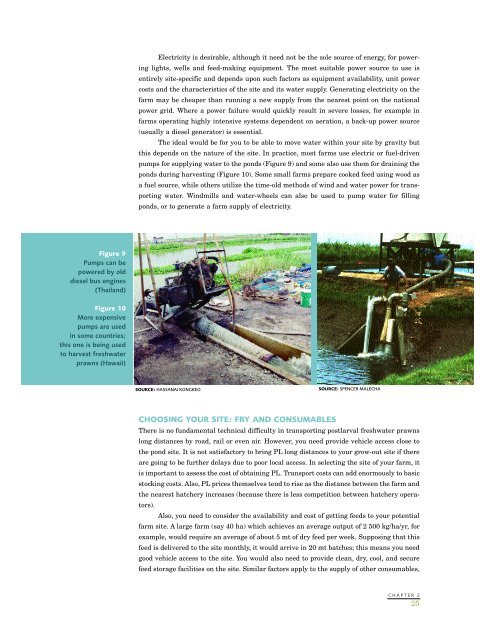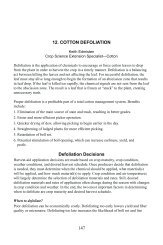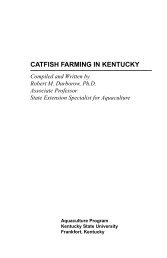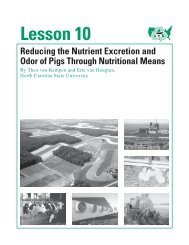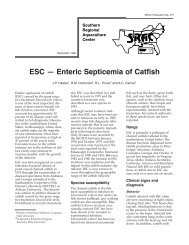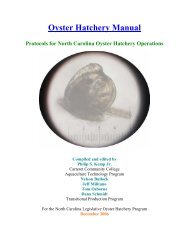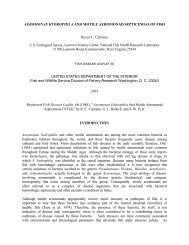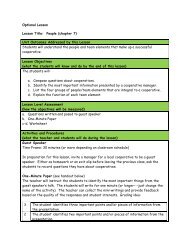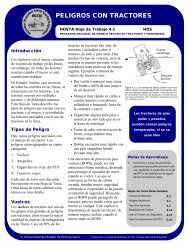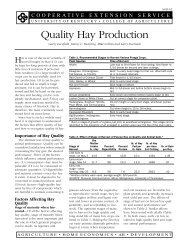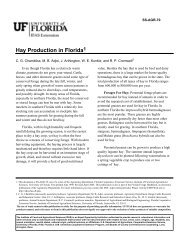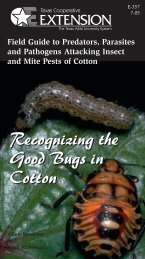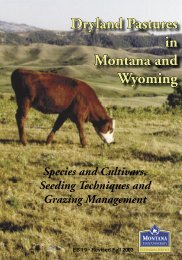Farming freshwater prawns A manual for the culture of ... - eXtension
Farming freshwater prawns A manual for the culture of ... - eXtension
Farming freshwater prawns A manual for the culture of ... - eXtension
You also want an ePaper? Increase the reach of your titles
YUMPU automatically turns print PDFs into web optimized ePapers that Google loves.
Electricity is desirable, although it need not be <strong>the</strong> sole source <strong>of</strong> energy, <strong>for</strong> powering<br />
lights, wells and feed-making equipment. The most suitable power source to use is<br />
entirely site-specific and depends upon such factors as equipment availability, unit power<br />
costs and <strong>the</strong> characteristics <strong>of</strong> <strong>the</strong> site and its water supply. Generating electricity on <strong>the</strong><br />
farm may be cheaper than running a new supply from <strong>the</strong> nearest point on <strong>the</strong> national<br />
power grid. Where a power failure would quickly result in severe losses, <strong>for</strong> example in<br />
farms operating highly intensive systems dependent on aeration, a back-up power source<br />
(usually a diesel generator) is essential.<br />
The ideal would be <strong>for</strong> you to be able to move water within your site by gravity but<br />
this depends on <strong>the</strong> nature <strong>of</strong> <strong>the</strong> site. In practice, most farms use electric or fuel-driven<br />
pumps <strong>for</strong> supplying water to <strong>the</strong> ponds (Figure 9) and some also use <strong>the</strong>m <strong>for</strong> draining <strong>the</strong><br />
ponds during harvesting (Figure 10). Some small farms prepare cooked feed using wood as<br />
a fuel source, while o<strong>the</strong>rs utilize <strong>the</strong> time-old methods <strong>of</strong> wind and water power <strong>for</strong> transporting<br />
water. Windmills and water-wheels can also be used to pump water <strong>for</strong> filling<br />
ponds, or to generate a farm supply <strong>of</strong> electricity.<br />
Figure 9<br />
Pumps can be<br />
powered by old<br />
diesel bus engines<br />
(Thailand)<br />
Figure 10<br />
More expensive<br />
pumps are used<br />
in some countries;<br />
this one is being used<br />
to harvest <strong>freshwater</strong><br />
<strong>prawns</strong> (Hawaii)<br />
SOURCE: HASSANAI KONGKEO<br />
SOURCE: SPENCER MALECHA<br />
CHOOSING YOUR SITE: FRY AND CONSUMABLES<br />
There is no fundamental technical difficulty in transporting postlarval <strong>freshwater</strong> <strong>prawns</strong><br />
long distances by road, rail or even air. However, you need provide vehicle access close to<br />
<strong>the</strong> pond site. It is not satisfactory to bring PL long distances to your grow-out site if <strong>the</strong>re<br />
are going to be fur<strong>the</strong>r delays due to poor local access. In selecting <strong>the</strong> site <strong>of</strong> your farm, it<br />
is important to assess <strong>the</strong> cost <strong>of</strong> obtaining PL. Transport costs can add enormously to basic<br />
stocking costs. Also, PL prices <strong>the</strong>mselves tend to rise as <strong>the</strong> distance between <strong>the</strong> farm and<br />
<strong>the</strong> nearest hatchery increases (because <strong>the</strong>re is less competition between hatchery operators).<br />
Also, you need to consider <strong>the</strong> availability and cost <strong>of</strong> getting feeds to your potential<br />
farm site. A large farm (say 40 ha) which achieves an average output <strong>of</strong> 2 500 kg/ha/yr, <strong>for</strong><br />
example, would require an average <strong>of</strong> about 5 mt <strong>of</strong> dry feed per week. Supposing that this<br />
feed is delivered to <strong>the</strong> site monthly, it would arrive in 20 mt batches; this means you need<br />
good vehicle access to <strong>the</strong> site. You would also need to provide clean, dry, cool, and secure<br />
feed storage facilities on <strong>the</strong> site. Similar factors apply to <strong>the</strong> supply <strong>of</strong> o<strong>the</strong>r consumables,<br />
CHAPTER 2<br />
25


